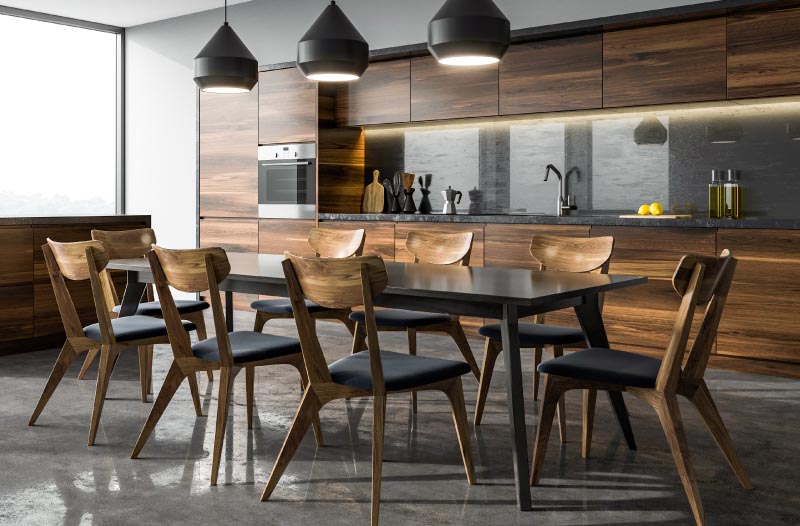The Art of Furniture: Balancing Functionality and Aesthetics
Furniture plays a vital role in the daily routine of our life, acting as essential elements, as well as a symbol of individual style inside the living areas we inhabit. From the chair we sit on to the couches that we rest on, furniture affects how we interact with our environment and is a significant contributor to our well-being and comfort. Being a key element of design for interiors, furniture surpasses the mere utilitarian aspect by displaying artistry and craft. Through the years, furniture design has evolved as a result of changing fashions in the world as well as technological advances as well as individual tastes, making it an intriguing subject worth exploring.
The development of furniture design goes from the beginning of time and where the practical nature of furniture often dictated the design and purpose of furniture. The earliest furniture was designed to be practical, using minimalist designs to meet fundamental requirements. As an example, the ancient Egyptians built tables and stools made of wood. The Greeks and Romans developed the art of furniture and incorporated materials such as bronze and marble. As the world changed and changed, so did the designs of furniture that reflected the values of culture as well as artistic trends. The Renaissance is an example. The Renaissance was a time of more elaborate patterns with intricate carvings as the Industrial Revolution introduced mass production which made furniture easier to access for people of all ages. This historical backdrop shows the way furniture is a constant symbol of change in society changing to meet the demands and demands in the time.
Modern-day furniture design is constantly evolving and modern styles are generally embracing minimalistism and practicality. In the mid-20th century, there was an important turning point in furniture design as architects started to focus on simple lines, organic designs with a strong emphasis on the use of materials. Classic pieces such as those of the Eames Lounge Chair as well as The Barcelona Chair emerged, blending the comfort of a chair with its aesthetic. Many designers today have been inspired by sustainability practices and are striving to design furniture that’s not just attractive but also sustainable. A focus on environmentally friendly production methods and materials is growing in importance, since consumers have become aware of the impact they have on the planet. The shift in focus is a result of an increasing conscious of the link between function, design as well as ecological responsibleness.
Furniture can play a significant part in defining the ambience in a room. A well-designed furniture set can improve the ambience, leading to a feeling of relaxation at ease, peace, or even efficiency. A well-planned living area with comfy seats and cozy lighting could provide a warm and inviting space that is ideal for gatherings with friends and family. Contrastingly, a clean minimalist work space can encourage concentration and imagination. The color, texture and layout all play vital aspects in the overall design as well as the functionality of a space. Designers often take these factors when deciding on furniture in order to find the perfect balance between design and functionality to satisfy demands of those who live there.

Apart from aesthetics, ergonomics of queen size mattress malaysia is now a crucial aspect in recent times. Since increasing numbers of people work for long periods at home or at their desks, the need for ease of use and comfort in furniture design is now at the fore. ergonomically designed desks, chairs and workstations seek to ease strain on the body and improve posture. They also improve the quality of life and wellbeing. A stress on health and well-being has radically changed the furniture market. Consumers are looking for pieces that improve their physical wellbeing. Furniture manufacturers are reacting to this need by including innovative materials and adjusting features in their designs, making sure that the latest furniture is able to meet the varied requirements of the modern day consumer.
The impact of technology in furniture design is not to be ignored also. The emergence of intelligent home technology has led to the introduction of digital elements into furniture making furniture that improves efficiency and convenience. From beds that are smart and adapt to your sleeping habits and coffee tables equipped with portable wireless chargers, the combination of tech and furniture design is resulting in new and innovative ways to live in the modern world. With technology and the Internet of Things (IoT) is growing the chances are that we’ll see more connected furniture designs that adapt to user’s needs immediately. This intersection between design and technology creates many possibilities to the future of furniture that will transform our living spaces into active spaces.
To conclude, furniture serves as more than functional items to us as it’s an artistic expression that expresses tradition, time, as well as personal taste. From traditional designs to the latest developments, the advancement of furniture continues to influence our surroundings and affect the way we live our lives. Its emphasis on the environment, ergonomics and technological advancements illustrate the evolving priorities of customers as well as designers. In the ever-changing world of our modern lives and living, the significance of thoughtful furniture design is becoming more apparent and highlights the necessity for furniture that improves the aesthetics and comfort. Furniture’s future furniture is exciting, with thrilling developments that will continue to improve our lives and homes in the years to come.
